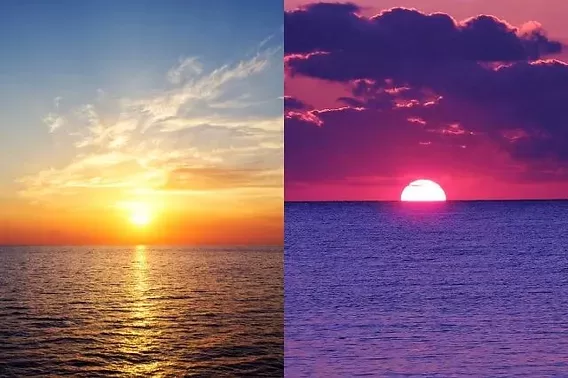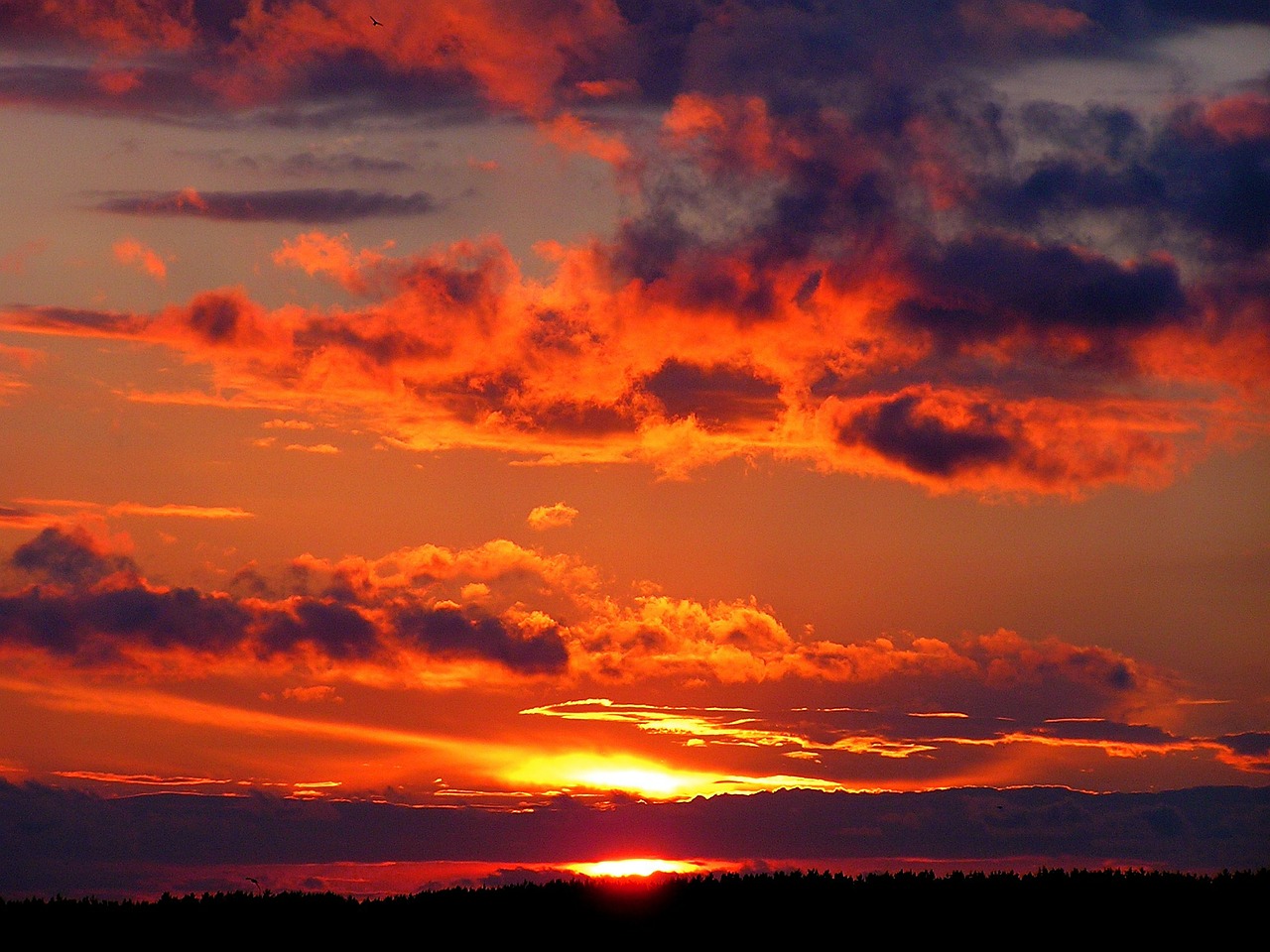The Beauty of Dawn and Dusk: Exploring Sunrise and Sunset...!!!
sunrise and sunset are daily reminders of the Earth's perpetual motion and the ever-changing nature of life. They offer moments of beauty, inspiration, and contemplation, inviting us to pause and appreciate the wonders of our world.

Sunrise and sunset are two of the most mesmerizing and awe-inspiring natural phenomena. These daily occurrences signify the transition between day and night, symbolizing beginnings and endings, and have been celebrated in art, literature, and culture throughout human history. Both events are the result of Earth's rotation and its position relative to the Sun.
Sunrise
Sunrise, also known as dawn, marks the moment when the upper limb of the Sun first appears above the horizon. This event occurs due to the Earth's rotation, bringing the Sun into view from a specific location. The experience of sunrise can vary greatly depending on geographic location, time of year, and weather conditions.
Phases of Sunrise:
1.Astronomical Dawn: The first phase of dawn occurs when the Sun is 18 degrees below the horizon. The sky begins to lighten, but it is still dark enough for most stars to be visible.
2.Nautical Dawn: When the Sun is 12 degrees below the horizon, nautical dawn begins. The horizon becomes faintly visible, and the brightest stars start to fade.
3.Civil Dawn: Civil dawn occurs when the Sun is 6 degrees below the horizon. The sky is bright enough for most outdoor activities without additional lighting. The colors of dawn, ranging from deep blues to vibrant oranges and pinks, begin to paint the sky.
3.Sunrise: Finally, sunrise is the moment when the upper edge of the Sun crosses the horizon, signaling the official start of the day.

The period leading up to sunrise is known for its serene beauty. The sky undergoes a gradual transformation, with colors shifting from dark blues and purples to fiery reds, oranges, and soft pinks. The morning air is often cooler and fresher, and the world seems to awaken slowly, accompanied by the chorus of birds.
Sunset
Sunset, or dusk, is the opposite of sunrise, marking the moment when the upper limb of the Sun dips below the horizon. This event signals the end of the day and the onset of night. Like sunrise, the experience of sunset can vary depending on location, time of year, and atmospheric conditions.
Phases of Sunset:
1.Civil Twilight: The first phase of twilight begins just after the Sun sets. The sky remains illuminated, allowing for most outdoor activities without artificial light. The colors of sunset, including deep oranges, reds, and purples, dominate the sky.
2.Nautical Twilight: When the Sun is 6 degrees below the horizon, nautical twilight begins. The horizon is still visible, but the sky darkens, and stars start to become visible.
3.Astronomical Twilight: This phase occurs when the Sun is 12 degrees below the horizon. The sky continues to darken, and most stars are visible. Nighttime officially begins when the Sun is 18 degrees below the horizon, marking the end of astronomical twilight.
The period leading up to and following sunset is often considered one of the most beautiful times of the day. The sky undergoes a dramatic transformation, with colors shifting from bright yellows and oranges to deep reds, purples, and eventually dark blues. The warmth of the day gradually gives way to the coolness of the night, inviting moments of reflection and tranquility.

Cultural and Symbolic Significance
Sunrise and sunset hold deep cultural and symbolic meanings in various societies. They are often associated with cycles of renewal, rebirth, and the passage of time. In many cultures, sunrise symbolizes new beginnings, hope, and the promise of a fresh start. Conversely, sunset represents closure, rest, and the end of a journey.
Artists, poets, and writers have long been inspired by the beauty and symbolism of sunrise and sunset. These natural events have been depicted in countless works of art, literature, and music, each capturing the unique emotions and atmospheres they evoke.
Scientific Perspective
From a scientific standpoint, sunrise and sunset are caused by the Earth's rotation on its axis. As the Earth rotates, different parts of the planet move into and out of the Sun's light, creating the cycles of day and night. The apparent movement of the Sun across the sky is an illusion created by the Earth's rotation.
The colors of sunrise and sunset result from the scattering of sunlight by the Earth's atmosphere. As the Sun's rays pass through the atmosphere at a low angle, shorter wavelengths of light (blues and violets) are scattered out of view, leaving longer wavelengths (reds, oranges, and yellows) to dominate the sky.
In conclusion, sunrise and sunset are daily reminders of the Earth's perpetual motion and the ever-changing nature of life. They offer moments of beauty, inspiration, and contemplation, inviting us to pause and appreciate the wonders of our world. Whether witnessed from a mountaintop, a beach, or a cityscape, the splendor of these celestial events continues to captivate and inspire people around the globe
What's Your Reaction?

















